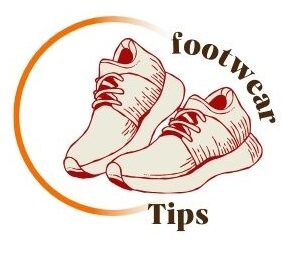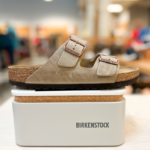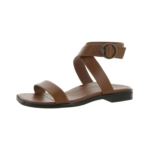Address:
- 2365 Hood Avenue, San Diego, CA, 92123
Barefoot lifting shoes are minimalist footwear designed for weightlifting, providing a natural and stable base for lifting exercises. These shoes have a zero drop flat sole and high-rise side walls, offering optimal support and stability during lifts.
They are available in various sizes and colors, with options for both men and women. Some popular brands include Deadlift Barefoot Workout Shoes, MANUEKLEAR Deadlift Shoes, ALEADER Men’s Cross-Trainer Shoes, Skerxut Fitness Shoes, and Vivobarefoot Men’s Low-top Shoes. These shoes are lightweight, comfortable, and attractive, making them suitable for weightlifting and other fitness activities.
The rise of barefoot lifting shoes has gained popularity among fitness enthusiasts. These shoes provide a minimalist design that allows for better ground contact and stability during weightlifting exercises. With a wide range of options available, from zero-drop soles to wider toe boxes, barefoot lifting shoes offer a comfortable and supportive choice for weightlifting activities.

Credit: anyasreviews.com
When it comes to weightlifting, having the right shoes can make all the difference in your performance. One type of shoe that has gained popularity in recent years is the barefoot lifting shoe. Designed to mimic the feeling of lifting barefoot, these shoes provide a more natural and stable base for your lifts. Understanding the anatomy of a barefoot lifting shoe is key to finding the perfect pair for your workouts.
Before we delve into the materials used in the construction of barefoot lifting shoes, let’s first explore some of the key features that make these shoes unique:
The materials used in the construction of barefoot lifting shoes play a crucial role in their performance and durability. Here are some common materials you’ll find in these shoes:
| Material | Description |
|---|---|
| Genuine Leather | Known for its durability and flexibility, genuine leather is often used in the upper part of barefoot lifting shoes. It provides a snug and supportive fit while allowing for natural foot movement. |
| Mesh | Mesh is used in the upper part of the shoe to enhance breathability and ventilation. It allows air to circulate, keeping your feet cool and dry during intense workouts. |
| Polyester | Polyester is a lightweight and moisture-wicking material commonly used in the lining or inner part of barefoot lifting shoes. It helps to keep your feet dry and reduces the risk of blisters or discomfort. |
| Rubber | Rubber is often used in the outsole of barefoot lifting shoes for its excellent grip and traction. It provides a secure grip on various surfaces, ensuring stability and preventing slips during lifts. |
By understanding the key features and materials used in the construction of barefoot lifting shoes, you can make an informed decision when choosing the right pair for your weightlifting needs. Whether you’re a beginner or an experienced lifter, these shoes can help improve your performance and enhance your lifting experience.
When it comes to barefoot lifting shoes, choosing the right fit is crucial for achieving optimal performance and preventing injuries. Whether you are a seasoned weightlifter or just starting out, the right fit can make all the difference in your lifting experience.
When selecting barefoot lifting shoes, it’s essential to pay close attention to the sizing and fit to ensure maximum comfort and support during workouts. Here are some tips to help you find the perfect fit:
With a wide array of brands and models available in the market, there is no shortage of options when it comes to barefoot lifting shoes. Each brand and model may offer unique features and design elements that cater to different preferences and requirements. Here are some popular brands and models to consider:
| Brand/Model | Price | Features |
|---|---|---|
| Deadlift Barefoot Workout Shoes | $39.99 | Zero Drop, Minimalist Sole |
| ALEADER Cross-Trainer Barefoot Shoes | $19.99 | Wide Toe Box, Gym Training Shoes |
| Xero Shoes | $89.99 | Lightweight, Full Rubber Coverage |
| Vivobarefoot Low-top | $124.71 | Genuine Leather, Wide Toe, Lightweight |
| Notorious Lift | $44.99 | Good Weather Resistance, Comfortable |
By exploring the diverse range of options, you can find the perfect barefoot lifting shoes that align with your specific needs and preferences.
Transitioning to barefoot lifting shoes can have numerous benefits for weightlifters, from improved balance and stability to greater strength and power. However, making the switch from traditional lifting shoes to barefoot ones requires a thoughtful approach and an understanding of the common challenges that may arise. In this section, we will explore the best approach to transitioning to barefoot shoes and provide strategies for overcoming any obstacles along the way.
When transitioning to barefoot lifting shoes, it’s essential to start with the right approach to ensure a smooth and effective adjustment. Here are some key steps to consider:
Transitioning to barefoot lifting shoes may come with its own set of challenges. Here are some common issues weightlifters may encounter and strategies to overcome them:
Discover the power of performance and technique with Barefoot Lifting Shoes. Designed for weightlifting and sports, these minimalist shoes provide a zero-drop flat sole and high-rise side walls for optimal support and stability. Perfect for fitness enthusiasts in Austin, Texas and beyond.
Discover the best barefoot lifting shoes with our user experiences and reviews. Find the perfect weightlifting shoes for men and women, designed to provide a minimalist and comfortable lifting experience. Shop now on Amazon for a wide range of options and free shipping.
Proper care and maintenance are essential to ensure the longevity and durability of your barefoot lifting shoes. By following some simple best practices, you can keep your shoes in top condition and extend their lifespan.
When it comes to maintaining your barefoot lifting shoes, regular cleaning and proper storage are crucial. Here are some maintenance best practices to keep in mind:
Ensuring the longevity and durability of your barefoot lifting shoes requires some proactive measures. Consider the following tips:
Barefoot lifting shoes are not just for the gym. Their versatility extends to various sports, activities, and everyday wear. Let’s explore how these minimalist shoes can be used beyond the confines of the gym.
When it comes to other sports and activities, barefoot lifting shoes can be a game-changer. The minimalistic design and flat sole make them ideal for activities such as weightlifting, CrossFit, and even yoga. The wide toe box provides stability and balance, making them suitable for activities that require precise foot placement.
For everyday wear, barefoot lifting shoes offer comfort and style. Whether you’re running errands, taking a leisurely walk, or simply going about your daily routine, these shoes provide the perfect blend of functionality and fashion. The lightweight construction and breathable materials make them a go-to choice for all-day wear.
Experience the future of footwear in fitness with Barefoot Lifting Shoes. Designed for weightlifting and fitness enthusiasts, these shoes provide a minimalist and natural feel, allowing for improved stability and performance during workouts. Say goodbye to bulky footwear and hello to a new level of comfort and functionality.
As the fitness industry continues to evolve, so does the footwear that accompanies it. One of the most exciting developments in recent years is the rise of barefoot lifting shoes. These innovative shoes are designed to mimic the feeling of being barefoot while providing the necessary support and protection for weightlifting and other fitness activities.
Traditional athletic shoes often feature thick soles and cushioning, which can hinder proper form and stability during exercises like squats and deadlifts. Barefoot lifting shoes, on the other hand, have a minimalist design that allows for greater ground contact and a more natural range of motion.
But what does the future hold for barefoot lifting shoes? Let’s take a look at some of the potential innovations on the horizon.
1. Enhanced Durability: As more fitness enthusiasts embrace the barefoot trend, shoe manufacturers will likely focus on improving the durability of these shoes. This could involve using more resilient materials and reinforced stitching to ensure the shoes can withstand the demands of intense workouts.
2. Customizable Fit: Everyone’s feet are unique, so it’s only natural that the future of barefoot lifting shoes will include options for a customizable fit. This could involve adjustable straps or lacing systems that allow users to fine-tune the fit of their shoes for maximum comfort and performance.
3. Improved Traction: Traction is essential when it comes to weightlifting and other fitness activities. Future barefoot lifting shoes may feature advanced rubber compounds or textured outsoles to provide better grip on various surfaces, reducing the risk of slips and falls.
4. Integrated Technology: With the increasing popularity of wearable fitness technology, it’s not far-fetched to imagine barefoot lifting shoes incorporating smart features. This could include built-in sensors to track metrics like weight distribution and balance, providing users with valuable feedback to improve their form and prevent injuries.
5. Sustainable Materials: As eco-consciousness grows, the future of barefoot lifting shoes may involve a shift towards more sustainable materials. Shoe manufacturers may explore options like recycled plastics or plant-based fabrics to reduce their environmental impact without compromising on performance.
While these predictions for the future of barefoot lifting shoes are speculative, there’s no denying the potential for exciting advancements in this field. As more fitness enthusiasts discover the benefits of training with minimal footwear, it’s likely that shoe manufacturers will continue to innovate and refine their offerings to meet the demands of an evolving market.

Credit: anyasreviews.com
Looking for barefoot lifting shoes? Check out our selection of top-rated weightlifting shoes with minimalist designs, perfect for a natural and informed purchase.
Barefoot lifting shoes are becoming increasingly popular among fitness enthusiasts. These shoes are designed to provide a more natural feel while lifting weights, allowing for better balance, stability, and mobility. However, with so many options available in the market, making an informed purchase can be challenging. In this section, we will discuss some important factors to consider when choosing the right barefoot lifting shoes for you.
Credit: www.amazon.com
Lifting in barefoot shoes can be good as they provide stability and a natural feel, enhancing your lifting performance.
Barefoot shoes are a good option for the gym because they allow for a more natural range of motion and help strengthen the muscles in your feet. They also have a minimalist design, which can improve your balance and stability during weightlifting exercises.
However, it’s important to choose a pair with adequate support and protection for your feet.
Podiatrists are against barefoot shoes because they lack support and protection, increasing the risk of foot injuries.
The best barefoot lifting shoes include Deadlift Barefoot Workout Shoes, Weightlifting Squat Shoes, and Cross-Trainer Sneakers available on Amazon. These shoes offer minimalistic design and various features for comfortable and effective lifting.
Barefoot lifting shoes offer a unique and innovative approach to weightlifting and fitness training. With their minimalist design and zero drop sole, these shoes provide a barefoot-like experience while still offering the necessary support and protection for intense workouts. Whether you’re a professional athlete or a fitness enthusiast, barefoot lifting shoes can enhance your performance and improve your overall training experience.
So, why not give them a try and see the difference for yourself?
Get our most valuable tips right inside your inbox, once per month!
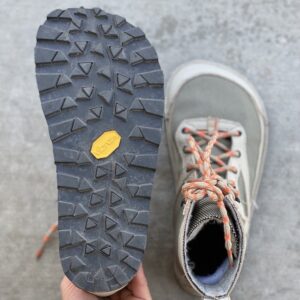
Looking for walking shoes with a wide toe box? Check out these top options for men and women that offer comfort, support, and a roomy

Looking for cheap barefoot shoes? Check out WHITIN Men’s Ultra-ventilated Barefoot Shoes for $19.99 on Amazon.com or Men’s Quick-dry Barefoot Shoes for $8.47 on Temu.
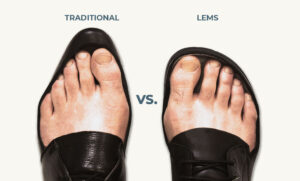
Foot-shaped shoes are available in various brands such as Lems Shoes, Padgene, Barekick, WHITIN, relxfeet, Xero Shoes, New Balance, Earthing Harmony, Atoms, BRONAX, Hike Footwear,
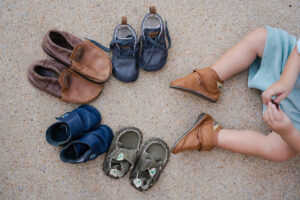
Toddler Barefoot Shoes provide a minimalist and lightweight option for kids to splay their feet naturally while walking, running, or playing sports. These shoes have
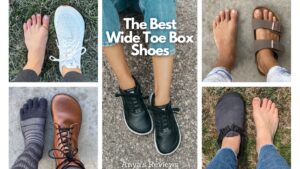
Discover a variety of wide toe box shoes for women in Austin, Texas, including options from Orthofeet, WHITIN, Temu, and more. These shoes offer comfort
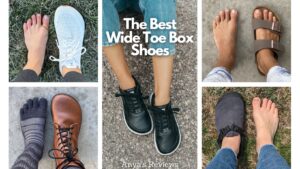
Toe box shoes provide ample space for the toes, allowing them to move freely and comfortably. They are available in various styles and sizes, with
